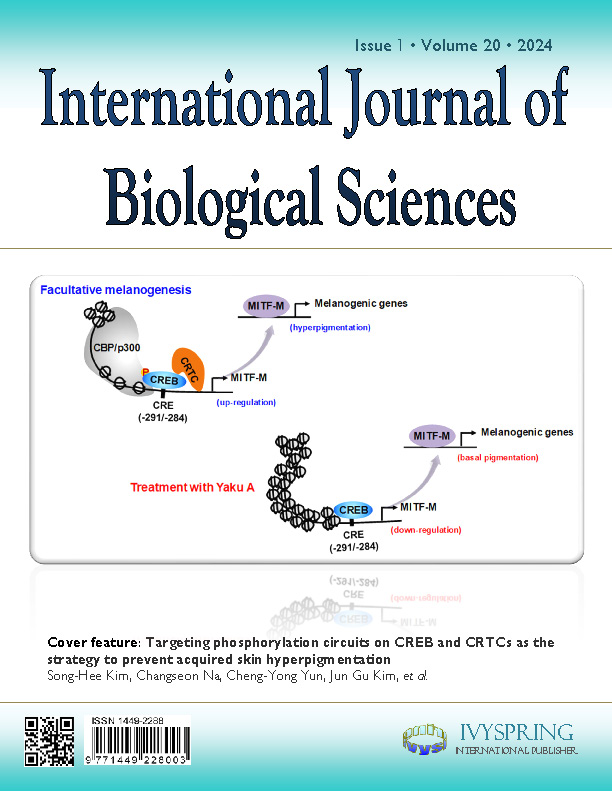血清淀粉样蛋白 A 通过 FPR2/Rac1/NF-κB 通路激活巨噬细胞,导致辐射诱导的肺损伤
IF 8.2
2区 生物学
Q1 BIOCHEMISTRY & MOLECULAR BIOLOGY
引用次数: 0
摘要
接受胸部放疗的患者可能会受到辐射诱导的肺损伤,但由于其潜在机制尚不清楚,因此治疗方案有限。本研究利用小鼠模型,连续三天(每天 8 Gy)使用分次剂量的 X 射线照射右胸,发现胸腔照射(Th-IR)会诱发组织损伤,巨噬细胞异常浸润,并显著增加小鼠体内 TNF-α、IL-1β、IL-6、TGF-β1 和血清淀粉样蛋白 A(SAA)的分泌。有趣的是,SAA能激活巨噬细胞,进而诱导肺上皮细胞的上皮-间质转化(EMT)和肺组织的纤维化进展。从机理上讲,SAA 可增强 FPR2 与 Rac1 蛋白的瞬时结合,并进一步激活巨噬细胞中的 NF-κB 信号通路。抑制 FPR2 能显著减轻小鼠因服用 SAA 而诱发的肺纤维化。此外,西咪替丁能降低照射后 SAA 的释放水平,减轻 SAA 或 Th-IR 诱导的肺损伤。总之,我们的研究结果表明,SAA通过FPR2/Rac1/NF-κB途径激活巨噬细胞,并可能导致Th-IR诱导的肺损伤,这可能为减轻放疗期间辐射诱导的不良反应提供了一种新策略。本文章由计算机程序翻译,如有差异,请以英文原文为准。
Serum amyloid A contributes to radiation-induced lung injury by activating macrophages through FPR2/Rac1/NF-κB pathway
Patients who receive thoracic radiotherapy may suffer from radiation-induced lung injury, but the treatment options are limited as the underlying mechanisms are unclear. Using a mouse model of right thorax irradiation with fractionated doses of X-rays for three consecutive days (8 Gy/per day), this study found that the thoracic irradiation (Th-IR) induced tissue injury with aberrant infiltration of macrophages, and it significantly increased the secretion of TNF-α, IL-1β, IL-6, TGF-β1 and serum amyloid A (SAA) in mice. Interestingly, SAA could activate macrophages and then induce epithelial-mesenchymal transition (EMT) of lung epithelial cells and fibrosis progression in lung tissue. Mechanistically, SAA enhanced the transient binding of FPR2 to Rac1 protein and further activated NF-κB signaling pathway in macrophages. Inhibition of FPR2 significantly reduced pulmonary fibrosis induced by SAA administration in mice. In addition, cimetidine could reduce the level of SAA release after irradiation and attenuate the lung injury induced by SAA or Th-IR. In conclusion, our results demonstrated that SAA activated macrophages via FPR2/Rac1/NF-κB pathway and might contribute to the Th-IR induced lung injury, which may provide a new strategy to attenuate radiation-induced adverse effects during radiotherapy.
求助全文
通过发布文献求助,成功后即可免费获取论文全文。
去求助
来源期刊

International Journal of Biological Sciences
生物-生化与分子生物学
CiteScore
16.90
自引率
1.10%
发文量
413
审稿时长
1 months
期刊介绍:
The International Journal of Biological Sciences is a peer-reviewed, open-access scientific journal published by Ivyspring International Publisher. It dedicates itself to publishing original articles, reviews, and short research communications across all domains of biological sciences.
 求助内容:
求助内容: 应助结果提醒方式:
应助结果提醒方式:


